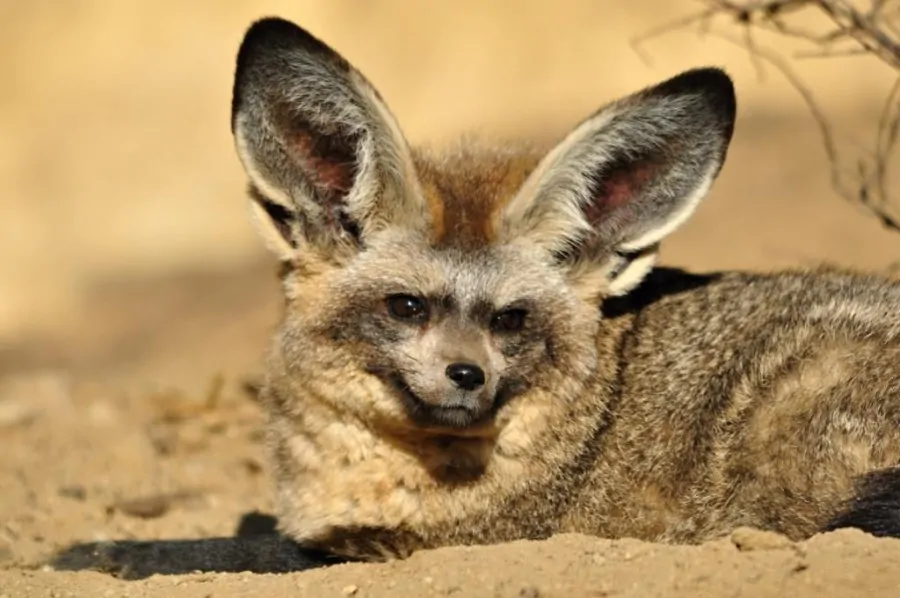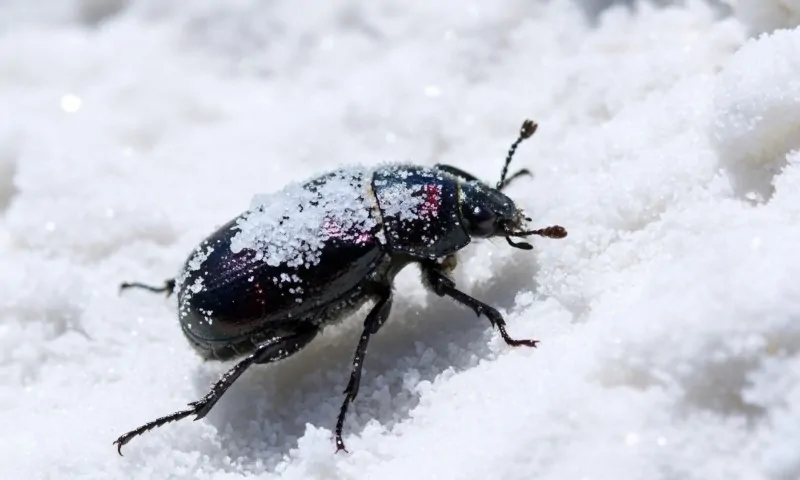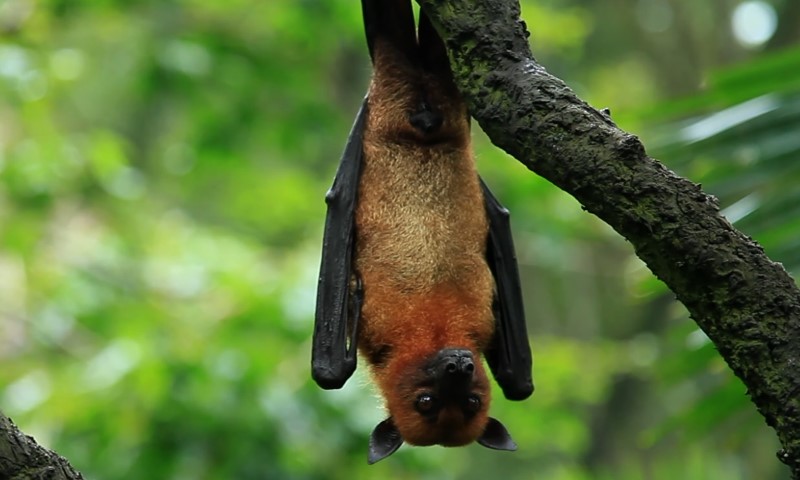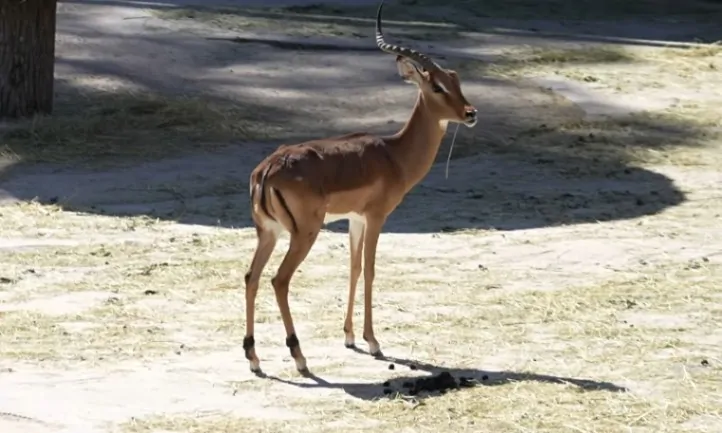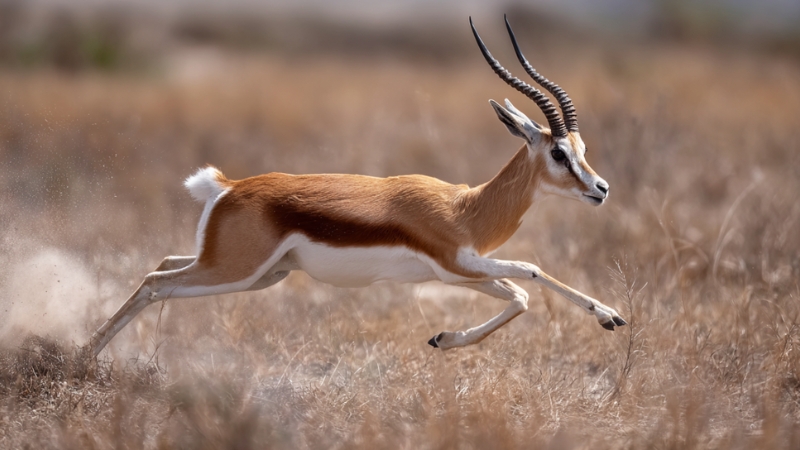African deserts like the Namib, Sahara, and Kalahari are vast, scorching environments where temperatures soar by day and drop sharply at night. Survival in these harsh zones requires adaptation, especially for animals that are active when the sun goes down, when the nocturnal animals come to the stage.
Nocturnality is a crucial trait that allows animals to avoid searing heat, reduce water loss, and thrive under the cover of darkness. Many species have evolved to hunt, forage, and navigate in near-total darkness with the help of heightened senses and specialized body features.
Creatures that emerge after sunset display extraordinary behavioral and physical traits designed to outlast extreme conditions and elusive prey or predators in the silent dunes and scrublands.
Let us talk about the best-known nocturnal animals of the African Deserts.
| # | Animal | Key Traits |
|---|---|---|
| 10 | Cape Porcupine | Large rodent, sharp quills, scent-marking, monogamous, territorial |
| 9 | Namaqua Chameleon | Color shifts, fast tongue, wide feet, hissing, semi-nocturnal |
| 8 | Brown Hyena | Shaggy, scavenger, strong smell, clan-based, low water need |
| 7 | Namib Golden Mole | Blind, detects vibrations, swims in sand, dense fur, insectivore |
| 6 | Bushbaby | Big eyes, leaping, insect hunter, padded fingers, vocal |
| 5 | Small-Spotted Genet | Agile, spotted, good climber, nocturnal, solitary |
| 4 | Fennec Fox | Large ears, small size, nocturnal, burrows, cream fur |
| 3 | Bat-Eared Fox | Huge ears, insect diet, agile, social, nocturnal |
| 2 | Ground Pangolin | Keratin scales, insect eater, rolls into ball, solitary, long tongue |
| 1 | Aardvark | Nocturnal, digs with claws, long tongue, strong smell, borrower |
10. Cape Porcupine (Hystrix africaeaustralis)
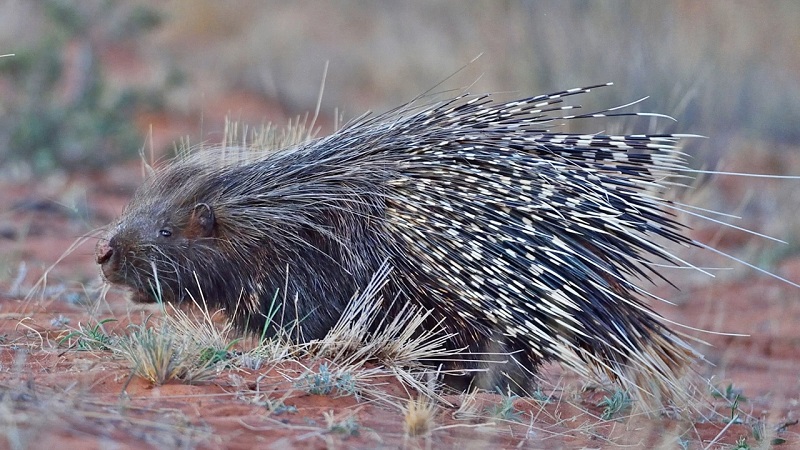
- Largest rodent in Africa, up to 66 lbs (30 kg)
- Long, sharp quills and hollow tail spines used to deter predators
- Roots, bark, bulbs, fallen fruit, and cultivated crops
- Nocturnal, monogamous, and territorial
- Semi-deserts, woodlands, savannas, and agricultural edges
- Scent marking, foot stamping, and various vocal sounds
Cape porcupines roam vast areas across southern and central Africa, including semi-desert regions where food sources are scattered and predators are many. As the largest rodents on the continent, they play a distinctive role in desert ecosystems.
Foraging begins at dusk and continues through the night, with individuals traveling considerable distances in search of roots, bark, tubers, fallen fruit, and sometimes cultivated crops. Their acute sense of smell helps them locate food beneath the soil surface or under debris.
Defensive behavior makes Cape porcupines especially memorable. When sensing danger, they stamp their feet, rattle hollow tail quills, and will often reverse-charge predators with their sharp quills leading the way.
These quills are not thrown, as commonly believed, but can easily embed into attackers with painful results. Very few natural predators are willing to take on a mature porcupine due to this formidable defense.
Social structure revolves around monogamous pairs. Mates share underground burrows and participate in rearing offspring together. Family bonds are strong, and territorial boundaries are marked using scent glands and urine.
Vocalizations include grunts, squeals, and growls, particularly during interactions with intruders or during mating season.
9. Namaqua Chameleon (Chamaeleo namaquensis)
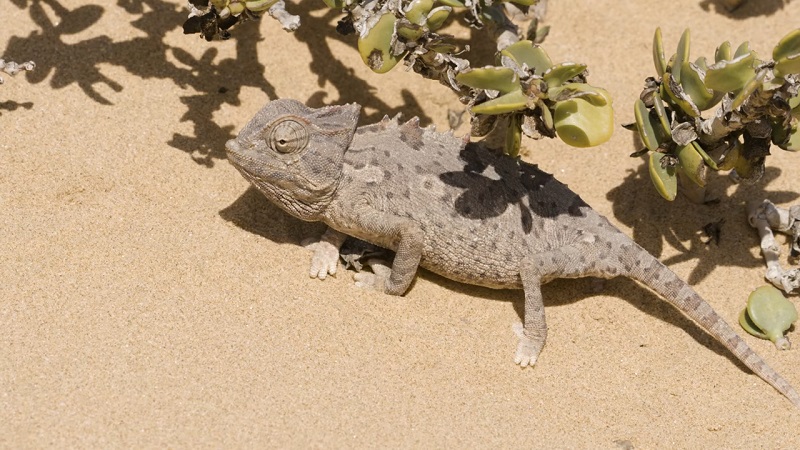
- Semi-nocturnal behavior
- Color-shifting skin for temperature regulation and signaling
- Rapid tongue projection for capturing prey
- Prehensile tail and wide feet for terrain adaptation
- Diet includes insects and small reptiles
- Displays territorial aggression through head bobs and hissing
Namaqua chameleons inhabit coastal desert dunes, particularly in the arid regions of Namibia and parts of South Africa.
These reptiles have adapted to the intense thermal extremes of their environment by becoming semi-nocturnal, often retreating into shade or burrows to escape daytime heat and emerging during cooler parts of the day or night.
Their behavior reflects a careful balance between thermoregulation and predation avoidance.
Color change is not only a defense mechanism but also a tool for temperature control. Lighter shades reflect heat during the day, while darker colors absorb warmth when temperatures drop. Namaqua chameleons also use their shifting hues to express stress, aggression, or readiness to mate.
Their feeding strategy is equally impressive, using a ballistic tongue that can extend more than twice the length of their body to catch prey in milliseconds. Insects are the primary target, though they have been observed consuming small reptiles, including other chameleons.
Strong feet with wide toes give excellent grip on soft sands and rocky surfaces, while prehensile tails act like an extra limb for balance and movement.
When threatened, they raise their heads, inflate their bodies, and hiss loudly to scare off intruders. These displays are often enough to deter predators, giving the chameleon a chance to retreat.
8. Brown Hyena (Parahyaena brunnea)
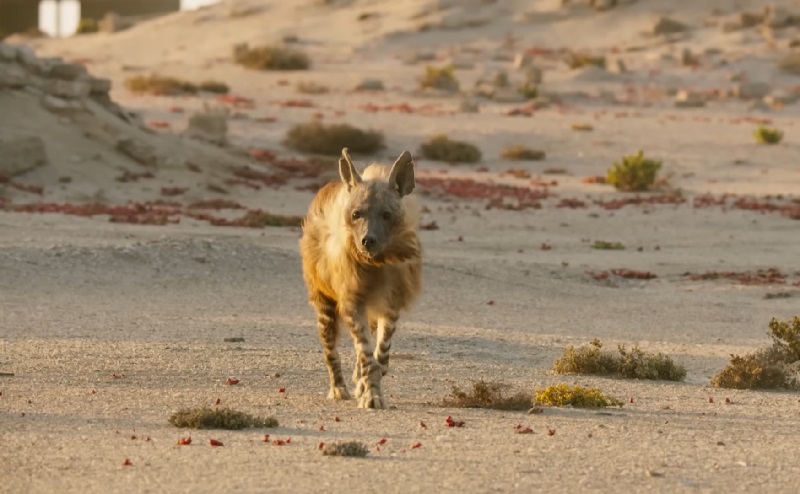
- Southern Africa, Namib Desert, dry scrublands
- Nocturnal scavenger, long-range traveler, clan-associated
- Shaggy brown coat, striped legs, powerful jaws
- Carrion, bones, hides, sometimes small live prey
- High endurance, moisture extraction from food, acute sense of smell
- Small clans, shared parental duties, low aggression levels
Brown hyenas roam vast territories in southern Africa, especially along the arid Namib Desert coastlines. Preferring solitude during their long nighttime treks, they rely on powerful olfactory senses to locate decaying flesh from several kilometers away.
Unlike more aggressive spotted hyenas, brown hyenas avoid confrontation and often scavenge silently after dusk.
Matted, shaggy fur in various shades of brown provides insulation during cold desert nights, while their striped legs add to their distinctive appearance. Social behavior includes clan-based living, though groups are smaller and more loosely organized than other hyena species.
Strong bonds exist between females and their offspring, with shared denning and cooperative care.
Brown hyenas require minimal drinking water, obtaining necessary hydration through prey. This trait allows survival in extremely arid regions.
Their digestive systems are adapted to process carrion that most predators leave behind, including sun-dried bones, hides, and hooves. Few animals match their efficiency in clearing remains from desert ecosystems.
7. Namib Golden Mole (Eremitalpa granti namibensis)
- Blind and earless; relies on seismic vibrations and facial hairs
- “Swims” through sand using compact, strong forelimbs
- Dense, water-repellent fur for insulation and protection
- Active at night to avoid extreme temperatures
- Feeds on insects, larvae, and other small invertebrates
- Important contributor to desert soil health and nutrient cycling
Buried beneath the shifting dunes of the Namib Desert, the Namib golden mole is an elusive, nocturnal creature that thrives in one of the world’s harshest environments.
Rarely seen above ground, it has adapted to a life entirely beneath the sand, “swimming” through loose grains in search of insects, larvae, and other invertebrates.
Virtually blind and earless, it navigates using highly sensitive facial hairs and its ability to detect vibrations in the ground. These seismic cues help it locate prey and avoid predators, making it one of the few mammals capable of “hearing” through its feet.
Lack of external openings prevents sand from entering its body, a critical feature for survival under the dunes.
Dense, silky fur acts as a barrier against both moisture loss and abrasive particles. Movement through sand is facilitated by powerful, shovel-like forelimbs and a streamlined body that reduces resistance. At night, when the desert cools, it surfaces just enough to feed and return to safety.
Despite its small size, the Namib golden mole plays an essential ecological role.
6. Bushbaby (Galago spp.)
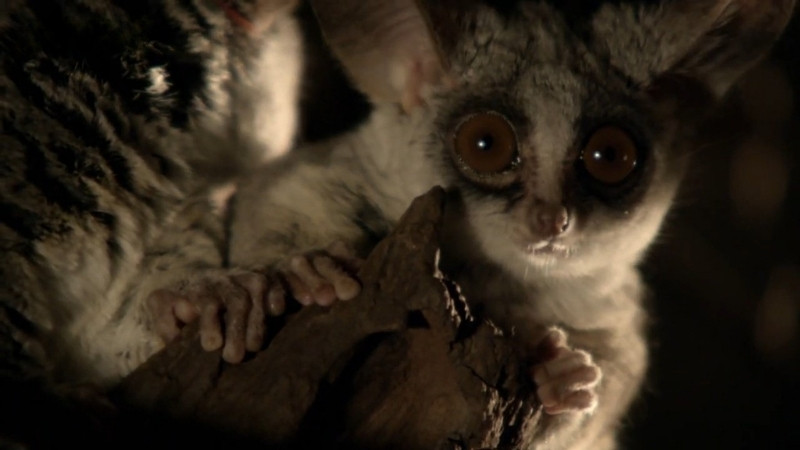
- Extremely large, forward-facing eyes for superior night vision
- Long hind legs and flexible spine enable powerful leaps
- Lightweight body and bushy tail for agile arboreal movement
- Acute hearing and vocal calls used for social interaction
- Padded fingertips for enhanced tree-gripping ability
- Nocturnal insectivore with solitary behavior patterns
- Known for eerie, high-pitched calls during nighttime activity
Often seen near desert margins in dry forests and woodlands, bushbabies are among the most agile nocturnal primates in Africa.
Their activity begins at twilight, as they spring into action under the veil of darkness. Weighing just a few hundred grams, they leap gracefully between branches in search of insects, fruit, and tree gum.
Despite their small size, they are expert hunters of small prey, capable of fast, precise strikes mid-air or on bark surfaces.
Massive forward-facing eyes give them outstanding night vision, allowing them to navigate dense vegetation under low light. Their flexible spine and long hind limbs provide catapult-like jumping power, letting them travel up to two meters in a single bound.
Small hands equipped with opposable thumbs and padded fingertips ensure a solid grip on branches and vertical surfaces.
Haunting vocalizations fill the night air, long wails, clicking sounds, and squeaks, all used for territory defense or communication with mates. Often solitary, they nest in tree hollows, dense thickets, or abandoned bird nests during the day to remain hidden from predators such as snakes, owls, and genets.
5. Small-Spotted Genet (Genetta genetta)
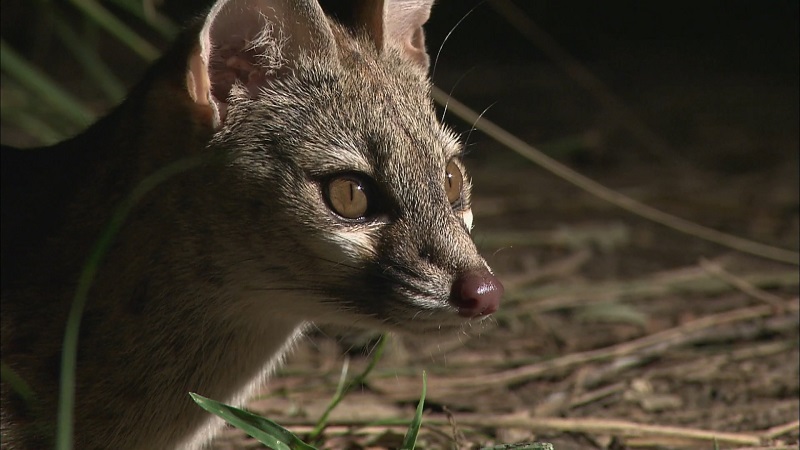
- Slender, elongated body built for stealth and agility
- Black-ringed tail used for balance and signaling
- Spotted coat providing camouflage in dry terrain
- Nocturnal hunting behavior with opportunistic diet
- Sharp claws and flexible joints aiding in climbing
- Solitary lifestyle with strong territorial instincts
- Large eyes for enhanced low-light vision
- Keen sense of smell and hearing for precise tracking
Small-spotted genets inhabit the fringes of desert and savanna zones, moving like shadows under the cover of night.
With feline elegance, they navigate scrublands and dry woodlands in search of food. Birds, rodents, reptiles, and large insects are typical targets during their silent nightly hunts.
Unlike cats, genets are not true felines but belong to the Viverridae family. Their lithe, flexible bodies and semi-retractable claws allow them to scale trees with ease and drop down to the ground just as fluidly.
Agile movements, combined with a hyper-alert demeanor, make them hard to detect and harder to catch.
Most individuals live solitary lives, avoiding others except during mating periods. Communication is handled through scent marking, urine trails, and faint vocal signals. Elevated perches are often used to survey surroundings or rest in safety, particularly in rocky areas or dense bushes.
Large, forward-facing eyes enhance night vision, essential for targeting prey in sparse moonlight. A strong sense of smell assists in locating hidden creatures, while acute hearing picks up the softest rustles of movement in dry brush.
4. Fennec Fox (Vulpes zerda)
- Approximately 2 to 3 pounds (0.9 to 1.4 kg)
- Up to 6 inches (15 cm), crucial for heat dissipation and sound amplification
- Cream-colored, dense, reflective, and insulating
- Covered in thick fur for heat protection and silent movement
- Nocturnal, territorial, lives in social groups, communicates via yelps and gestures
- Insects, small mammals, birds, fruit, and roots
- Arid regions of the Sahara Desert, burrows in sandy soil
Dwelling in the scorching dunes of the Sahara, the fennec fox weighs little more than 2 pounds but survives with a combination of biological precision and behavioral instinct.
Small stature allows it to fit easily into tight burrows, which are often several feet deep and help maintain a cooler microclimate during the punishing heat of the day.
Unlike larger predators that must roam vast distances, the fennec fox capitalizes on its size and agility to hunt insects, small rodents, birds, and even eggs during nighttime hours.
Massive ears, often half the length of its body, play a vital role in survival. Not only do they enhance hearing to locate prey moving beneath the sand, but they also assist with regulating internal temperature by radiating excess body heat.
Highly social in structure, fennec foxes live in family groups where vocalizations, tail movements, and scent marking maintain order and territory.
Burrows can house several individuals and are expanded over time to accommodate offspring and seasonal needs. During cooler nights, these dens offer shelter from predators and harsh conditions.
Cream-colored fur reflects sunlight while providing insulation against nighttime chill. Fur-lined feet reduce friction and provide traction, acting as natural insulation against hot surfaces during twilight movement. With cautious grace, they traverse sand dunes quietly and quickly, leaving only faint tracks in their wake.
3. Bat-Eared Fox (Otocyon megalotis)
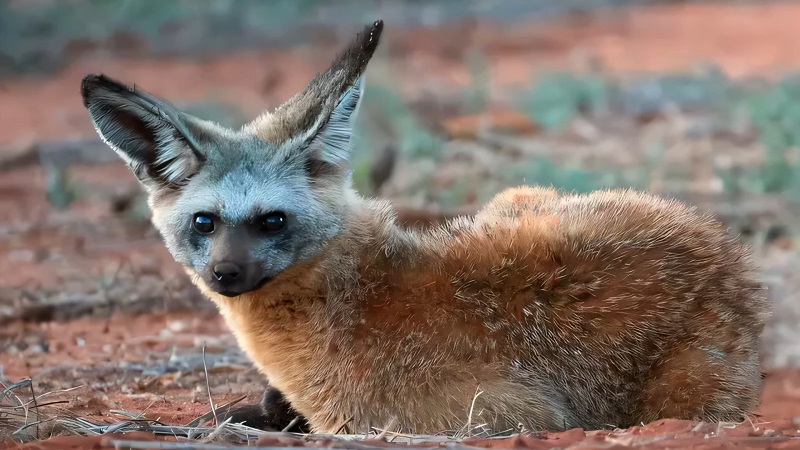
- Oversized ears for thermoregulation and acute hearing
- Insect-based diet with specialized molars
- Mostly nocturnal but may be diurnal in cold months
- Agile, with nimble footwork and fast reflexes
- Pale fur for desert camouflage
- Social tendencies in small groups
- Communicates through vocal sounds and scent markings
Roaming arid savannas and desert peripheries, bat-eared foxes are insectivores equipped with an extraordinary set of ears. Those ears serve a dual purpose, regulating body temperature and detecting the slightest sounds made by termites and beetles beneath the surface.
Even under moonlight, these foxes can pinpoint prey using auditory cues alone.
Activity peaks at night, but colder seasons may shift them to daylight movements. During nocturnal hours, they prowl silently, depending on sound over sight. Quick reflexes and silent movement patterns allow them to approach insects without startling them.
Light fur helps reflect heat and provides camouflage against sandy backdrops. Their teeth are adapted for high-frequency chewing, making short work of beetles, ants, and other insects with hard exoskeletons.
Small family units sometimes forage together, and their vocalizations include a range of yips and growls used for communication and territory defense.
2. Ground Pangolin (Smutsia temminckii)
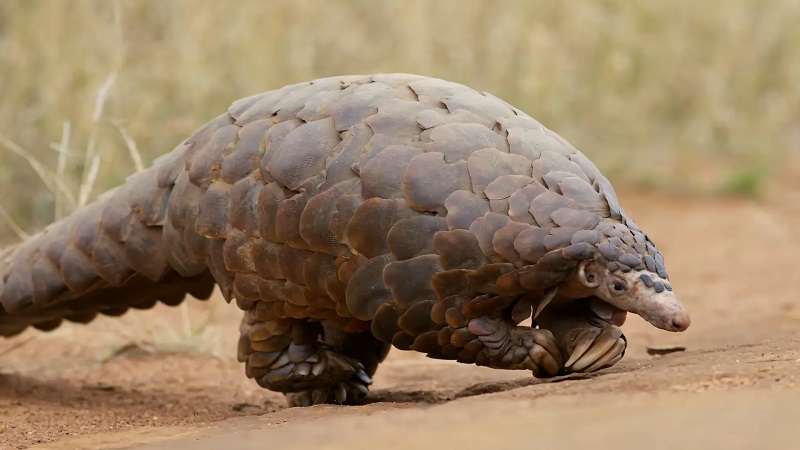
- Covered in overlapping keratin scales used for defense
- Nocturnal insectivore feeding on ants and termites
- Long, sticky tongue extending up to 40 cm
- Solitary and reclusive, travels alone at night
- Rolls into a tight, scaly ball when threatened
- Powerful limbs and claws for digging into insect nests
- Endangered due to poaching and habitat destruction
Often found near the arid fringes of southern and eastern African deserts, the ground pangolin is a solitary, armor-clad mammal with secretive habits. Emerging only after sunset, it uses a cover of darkness to travel across dry terrain in search of food.
Its prey of choice consists primarily of ants and termites, which it locates with an acute sense of smell. A long, sticky tongue, capable of extending up to 40 cm, allows it to reach deep into insect nests.
Nocturnality plays a critical role in its survival strategy. Cooler nighttime temperatures help conserve body moisture, while darkness shields it from aerial and terrestrial predators. As it moves, its claws and powerful forelimbs assist in breaking into termite mounds, while its tightly overlapping scales serve as a nearly indestructible shield.
When alarmed, it instantly curls into a ball, tucking in its head and limbs. These keratin scales, the only of their kind among mammals, deter most would-be attackers. Hyenas and big cats typically give up when faced with such a formidable defense.
1. Aardvark (Orycteropus afer)
- Nocturnal and solitary behavior
- Long, sticky tongue for insect feeding
- Powerful claws for digging and defense
- Thick hide for protection
- Large ears for detecting underground movement
- Poor eyesight but excellent sense of smell
- Thermoregulating behavior through burrowing
Living in semi-arid savannas and desert fringes, the aardvark is a solitary nocturnal mammal with a specialized diet. Emerging only after sunset, it silently roams the terrain in search of termites, often traveling several kilometers each night.
Its movements are quiet and deliberate, minimizing energy expenditure in an environment where resources are scarce.
Massive claws serve as effective tools for breaking into termite mounds and digging elaborate tunnel systems. These burrows offer shelter from predators and insulation against extreme temperatures.
Aardvarks rely on their long, sticky tongues, sometimes measuring up to 30 centimeters, to capture insects with remarkable speed, often consuming tens of thousands in one outing.
Thick, leathery skin helps ward off insect bites, thorny vegetation, and abrasive soil particles. Large ears rotate independently, detecting even the faintest subterranean rustling. With poor eyesight, the aardvark compensates through a highly developed sense of smell, guiding it efficiently to food sources hidden below the surface.
Long hours underground during the day help reduce water loss and avoid solar exposure. Burrows are frequently reused and may become temporary shelters for other animals after abandonment.
Summary
Survival in African deserts demands a blend of sensory sharpness, efficient thermoregulation, and specialized feeding strategies.
Nocturnal animals display these adaptations with precision and resilience.
Each species plays a crucial ecological role, pollinating, aerating soil, or controlling insect populations. Some face threats like habitat loss and illegal trade, highlighting the need for stronger protections.
Related Posts:
- Top 10 Most Dangerous Desert Animals You Should Avoid
- Top 12 Amazing Desert Landscapes In The World
- Top 12 Most Strange Desert Plants - Flora You Won't…
- Baobab - The Iconic African Tree That Grows Upside Down
- Wildest African Desert Expeditions Captured by YouTubers
- Ten Bizarre Insects That Rule the African Desert

